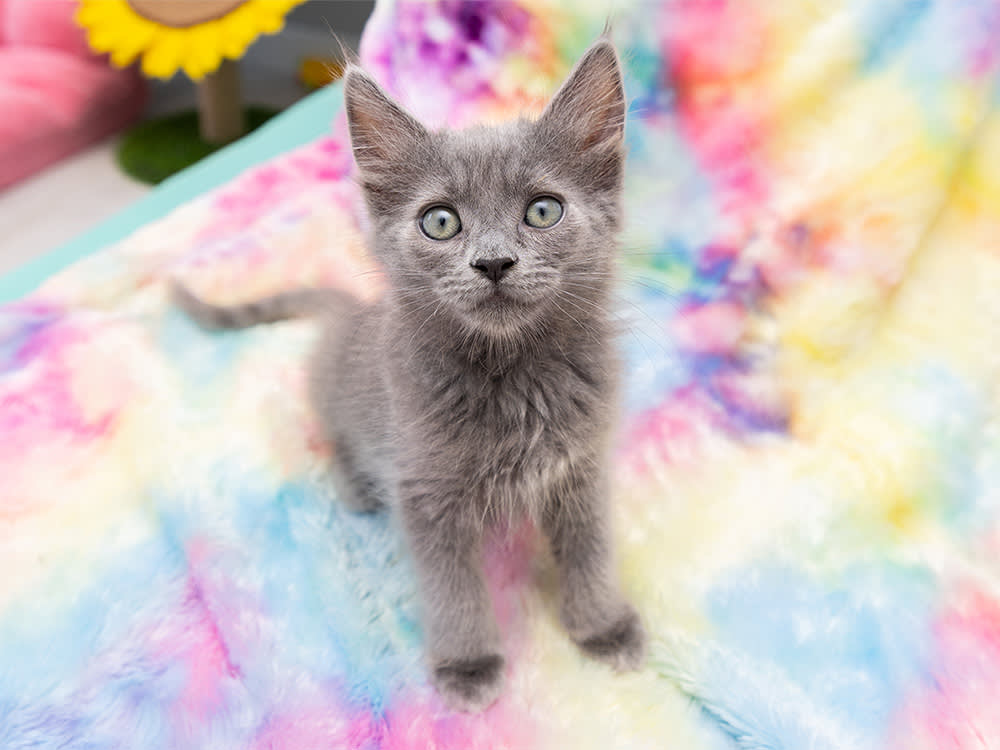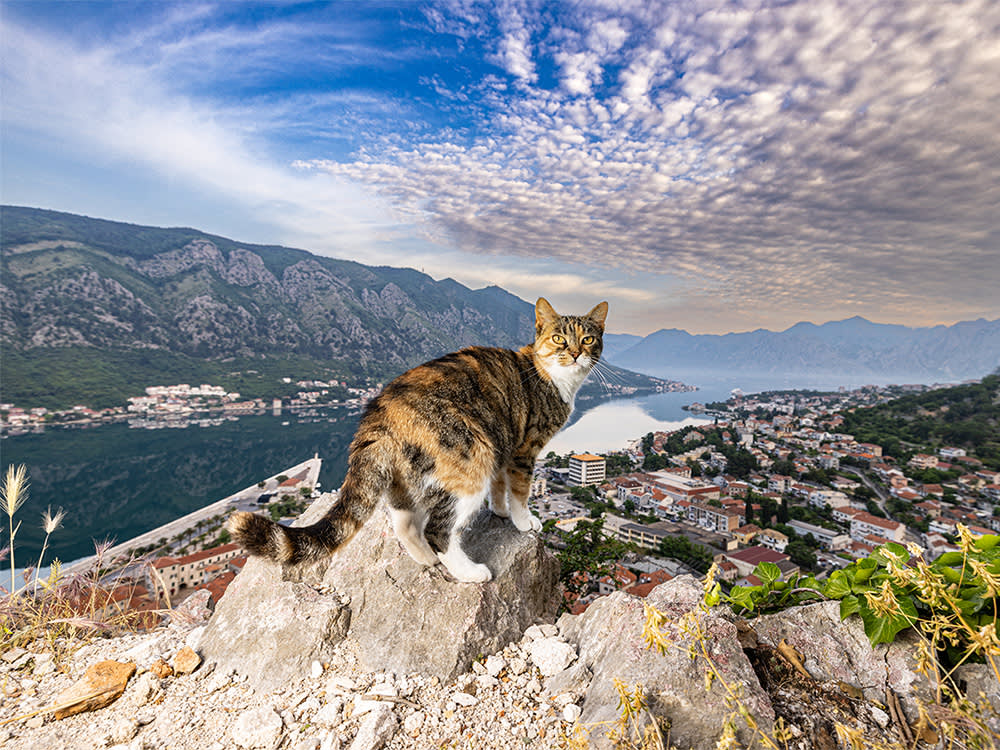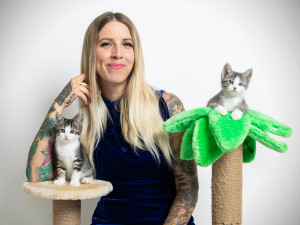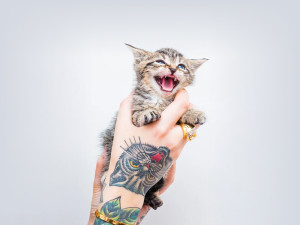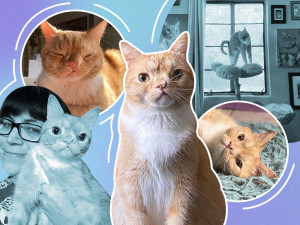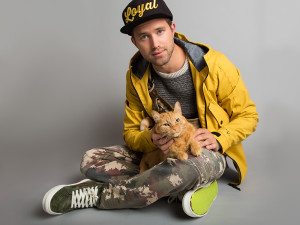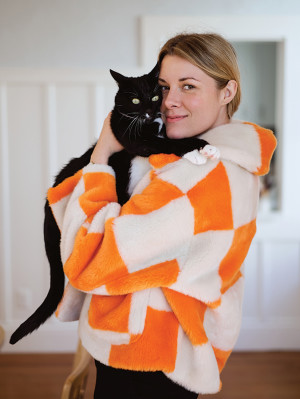How to Do the Impossible: Take Great Photos of Your Cat
Given up hope? Try these tips from a professional cat photographer.
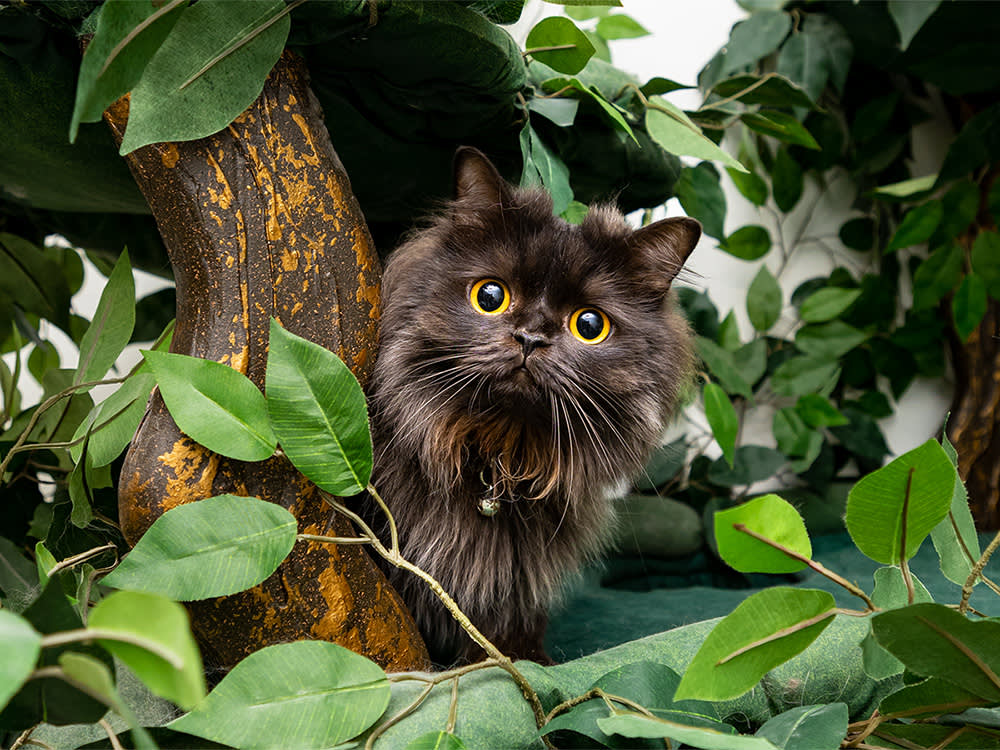
share article
I know the scenario: Your cat is doing the sweetest or silliest thing, and you reach for your phone to document it for the gram — or just to boost your own serotonin. Then, right as you push the button to snap a pic, they stop doing what they’re doing, give you a sassy look, and your picture is just a blurry image of fur. I completely empathize — and I think I can help.
I’m a professional cat photographeropens in a new tab and kitten rescueropens in a new tab (along with my partner, “Kitten Lady” Hannah Shawopens in a new tab), based in San Diego. I’ve been taking photos of cats for over 10 years and even published an instructional book called How to Take Awesome Photos of Catsopens in a new tab (2020), so I’ve got lots of expertise to share. I know how tricky it is to get those little balls of fluff to sit still, look at the camera, or pretend that they care at all about what you are trying to do. Here’s some key advice for getting your kitty to shine in a photo like they’re Linda Evangelista.
Have Patience
I bet you didn’t see this coming first, huh? This is the primary thing I cover when I give my workshops. I often start by saying, “Before I begin, I want everyone to take a deep breath… and lower your expectations,” which always generates laughter from cat parents who know how difficult it can be to get a great shot. The truth is, getting the perfect photo of your cat is not easy.
Getting that shot can take many, many tries. It’s easy to get frustrated in the moment, especially when you can envision the finished product and are a few milliseconds away from achieving the shot, only to have the cat suddenly bound off down the hallway. I’m not suggesting that you have to be Dalai Lama levels of zen, but it certainly doesn’t hurt. It’s essential to approach the situation with flexible, fluid ideas and a number of plan Bs. You (and your cat) will be way happier with the results.
Be Natural
Every photographer has their own style, and mine always leans heavily into the laissez-faire category. This means that I almost never attempt to pose a cat. Not only will they have no idea what you’re trying to achieve, but it often upsets them in the process. I’m pretty well aware of my cats’ habits and preferences, so I have little issue getting them warmed up. If they’re a client’s cat, I dedicate a portion of the shoot to allow them to acclimate to me in their space.
I show them my camera while offering them treatsopens in a new tab or toysopens in a new tab to temper any anxiety. Once they’re rubbing their cheeks on my gear and allowing me to pet them freely, it’s go time. Without question, the best photos of cats come when they’re comfortable with you and their surroundings. This gives them the freedom to show off their unique personality.
Let There Be Light
After your cats are comfortable and feeling photogenic, I suggest finding a good, neutral light source in your space. Typically, this is a window. I won’t bore you with info about the white-light temperature spectrum, but natural sunlight is some of the best there is; it won’t heavily influence the colors in your photo. Find a good spot where the light pours through and use that as your stage. It’s important to remember to take pictures from the side or with your back to the light source. If your cat is eclipsing the light source, you’ll end up with unusable shots that are super shadowy and blown out.
Get Low
You can unlock a whole new perspective by getting on the same level or below your cat. We are so accustomed to seeing the world from several feet in the air, which ends up looking super boring if we take photos from that level, too. Try getting on your stomach and taking some shots from very low to the ground, from the same POV as your cat. You’ll be able to depict things very differently, and I always feel like this gives animals renewed agency as unique individuals.
Toys Are Your Friend
With all the other variables in place, we’re finally ready to start snapping photos. There are a few tricks to getting cats to look into the camera’s lens, which in turn appears as though they’re staring directly at the audience. My favorite method relies on two components: sight and sound. My go-to tools are crinkle balls and wand toys, the former being a bit easier to manipulate while taking photos.
Similar to how a magician performs a sleight of hand trick, make plenty of noise with the toy in your free hand (the one not holding the camera) and wave it around to draw attention. Once the cat is dialed in on the toy, quickly bring it behind the camera or on top of the lens. Take your photo, and voila, the cat’s looking at you. This can also have the beneficial effect of freezing the cat’s motion in place if they’re seriously locked in on the toy. You don’t always have to get photos of cats looking toward the camera, but it can be absolutely crucial for adoption photos, where every heartstring pulled counts.
Note: Always, always, always take more photos than you think you need. I’m constantly in burst mode with my equipment. Burst mode dramatically increases the chances that one of the photos you’re taking will be usable. With cats playing or on the move, you’ll have a much better opportunity to capture their motion cleanly.
Edit
This is one of the simplest things you can do to enhance your photo, but the most overlooked. Please, take 30 seconds before you post your photos to look at them more closely in an editing program. Almost every social media app has this baked into the program now, and the tools are very powerful.
The two most important things to get right here are brightness and color. Move the brightness, shadows, and highlights sliders until most elements of the image are similarly lit. Then look at the overall color and adjust the temperature slider until it’s not too cool or warm. Once the photo looks pretty neutral, feel free to turn up the saturation just a bit to make the color pop out of the screen. Be careful not to crank that slider too hard, or you run the risk of creating an abomination.
OK, that’s it! I hope this will help you level up your feline-photography game. Remember, in the moment, the best camera you have is the one in your hands. For most of us, that means our phones, so start there. Don’t wait until you have the perfect gear to begin your cat photography journey. All of the above tips will work whether you’re on a brand-new DLSR or a smartphone. So, follow my advice, and your kitty will be smizing so well, Tyra would only have one thing to say: “Congratulations. You’re still in the running towards becoming America’s Next Top Model.”

Andrew Marttila
Andrew is a professional animal photographer who specializes in cats. His work has been used across digital and print — from National Geographic to Good Morning America, and he’s the author of Shop Cats of New York (2019), Cats on Catnip (2018), and How to Take Awesome Photos of Cats (2020). He lives in San Diego, where he and his partner, Hannah Shaw, a.k.a. “ kitten ladyopens in a new tab,” run Orphan Kitten Clubopens in a new tab.
Related articles
![The Wildest's cover star Hannah Shaw smiling at the camera behind a cat tower with two kittens sitting on top of it]() opens in a new tab
opens in a new tab“Kitten Lady” Hannah Shaw Is Fostering a Movement
The lion-hearted animal advocate on rescuing her first kitten in a tree, designing an orphaned animal nursery, and becoming an Instagram sensation.
![A hand holding a kitten with a cat tattooed at the hand.]() opens in a new tab
opens in a new tabHeads Up: It’s Officially “Kitten Season”
Hannah Shaw, aka Kitten Lady, on how you can care for orphaned kittens this spring.
![Collage of Smush and Shannon on a purple, blue gradient background with white outlines]() opens in a new tab
opens in a new tabHow Insta-famous Cat, Smush, Uses Social Media for Good
A loud-mouthed, bread-stealing feline with a cleft lip is saving cats around the world.
![Nathan sitting on the floor with a cat in front of a gray background]() opens in a new tab
opens in a new tabMeet “Nathan the Cat Lady” — Model, Actor, Cat Dad Extraordinaire
For Nathan Kehn, building cat forts, scooping litter boxes, and traveling the country to rescue stray kitties is all in a day’s work.
![The Wildest's January Cover Star, Rainey Qualley, wearing a bright orange fluffy jacket while holding her white and black cat and standing in a closet full of purses and coats]() opens in a new tab
opens in a new tabRainey Qualley Is a Triple Threat: Actor, Musician, Kitten Foster Mom
Talent (and an obsession with cats) runs in the family.
![]() opens in a new tab
opens in a new tabMeet the Cat Who Made Lisa Say “Gah!”
The founder of indie fashion brand Lisa Says Gah! says George made starting over on her own feel possible. Now, if only she could get him to model one of her wildly popular pet sweaters...
